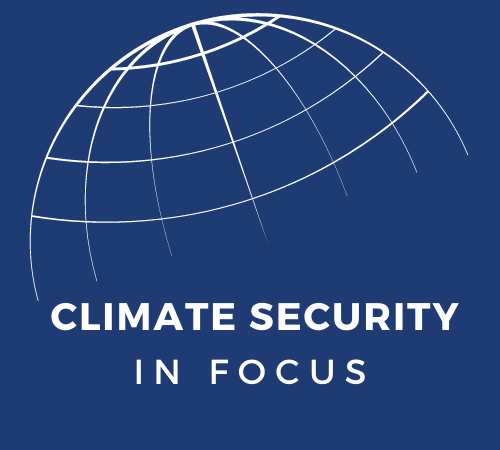
Climate and the 2022 National Defense Strategy
October 2022 was a significant month for federal strategies pertaining to climate security and national security. The fourth federal climate security relevant strategy released this month, the National Defense Strategy, was unique in that “for the first time, the Department [of Defense] conducted its strategic reviews, [including] the NDS, the Nuclear Posture Review (NPR), and the Missile Defense Review (MDR), in an integrated way” to ensure tight linkages between strategy and resources which resulted in three distinct, but aligned products.
The primary focus for the NDS is on integrated deterrence and predictably labels China as the pacing challenge. It also calls Russia an “acute threat” and identifies North Korea, Iran, and violent extremist organizations (VEOs) as persistent threats across domains and technologies, with particular emphasis on cyber, space, and gray-zone operations. Although climate is not called out explicitly in the four NDS priorities (defending the homeland; deterring strategic attacks; deterring aggression; building a resilient Joint Force and defense ecosystem), there is plenty of support throughout the NDS which elevates and entrenches climate as a national security issue.
Specifically, the NDS states,“…changes in global climate and other dangerous transboundary threats are already transforming the context in which the Department [of Defense] operates. Increasing temperatures, changing precipitation patterns, rising sea levels, and more frequent extreme weather conditions will affect basing and access while degrading readiness, installations, and capabilities. Climate change is creating new corridors of strategic interaction, particularly in the Arctic region. It will increase demands, including on the Joint Force, for disaster response and defense support of civil authorities, and affect security relationships with some Allies and partners. Insecurity and instability related to climate change may tax governance capacity in some countries while heightening tensions between others, risking new armed conflicts and increasing demands for stabilization activities.”
The special mention of the Arctic region tracks with the recently released National Strategy for the Arctic Region (NSAR), specifically Pillars 1 (Security), 2 (Climate Change and Environmental Protection), and 4 (International Cooperation and Governance), as well as the establishment of the DOD Arctic Strategy and Global Resilience Office. Since the Arctic is warming four times faster than the rest of the world thanks to a warming climate, the rapid evolution of the Arctic environment is quickly becoming a key area of focus for the U.S. both militarily and diplomatically. Russia has the longest Arctic coastline of any Arctic nation, and China has declared itself a “near-Arctic state.” As such, the chance of an accident or incident in the region has grown exponentially. Combined with the opening of the Ted Stevens Center for Arctic Security Studies, the newest Office of the Secretary of Defense for Policy (OUSD-P) Regional Center, and the impending appointment of an Ambassador for the Arctic Region, the U.S. is demonstrating its continued commitment to homeland defense, Alaska, and the region as a whole.
The NDS also integrates climate through its priority for resilience. It defines resilience as “the ability to withstand, fight through, and recover quickly from disruption” and calls for strengthening both resilience and adaptability, with particular emphasis on climate change. It states that the DOD will “strengthen the… ability to withstand and recovery quickly from climate events” and “continue to analyze climate change impacts on the Joint Force and integrate climate change into threat assessments.” It also makes reducing energy demand a priority and calls for the adoption of more efficient and clean-energy technologies, which synergizes the concepts and priorities in the DOD Climate Adaptation Plan, Army Climate Strategy, Navy Climate Action 2030, and Air Force Climate Action Plan. While not overtly prioritizing climate security, the NDS has still provided more support for understanding and contextualizing climate through a security lens.
Climate Security in Focus is a blog series dedicated to exploring key elements of climate security that impact American interests both at home and abroad. The series aims to examine specific aspects of climate security issues in order to better understand climate policy challenges, facilitate conversation, and generate ideas.





